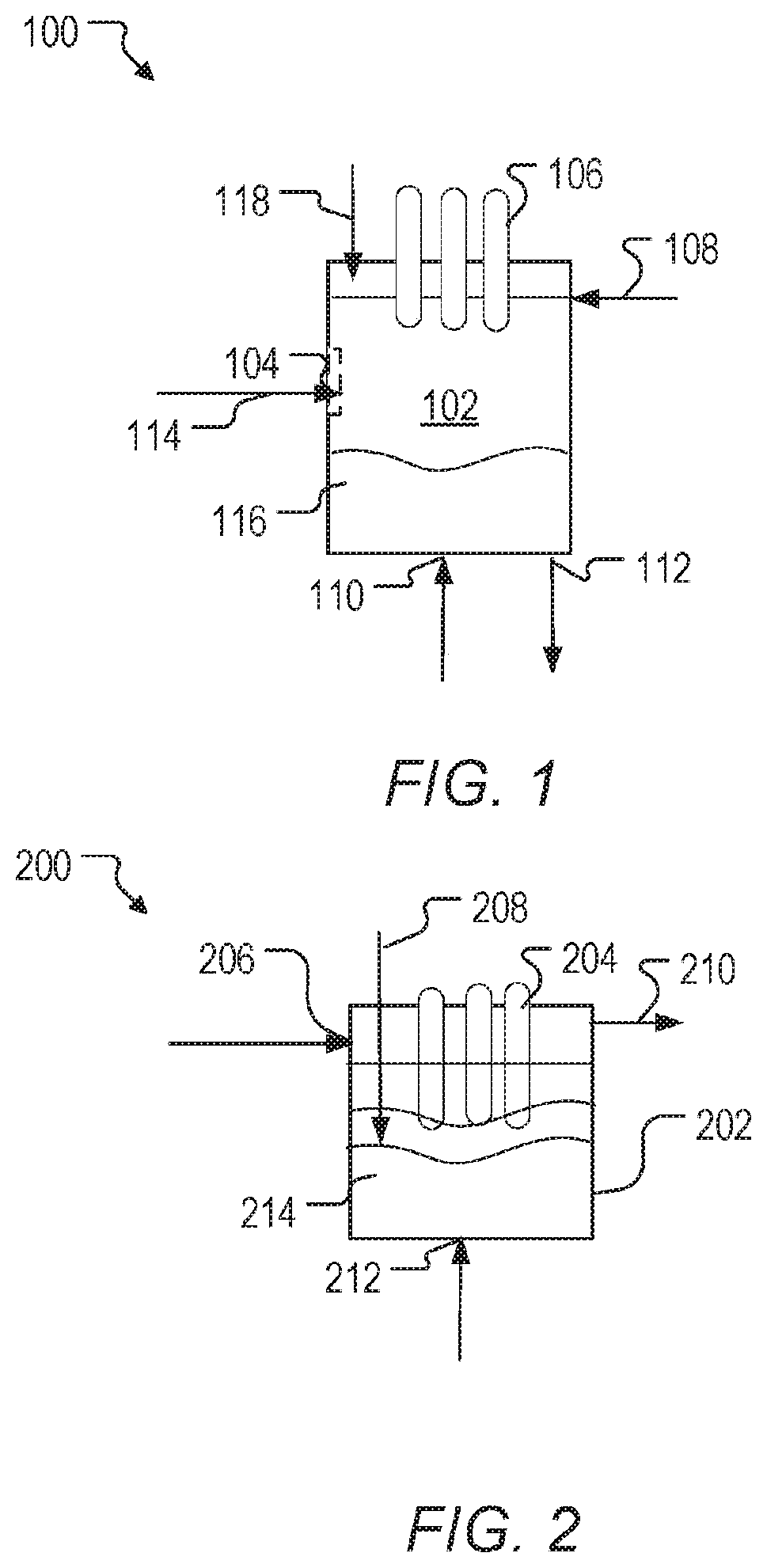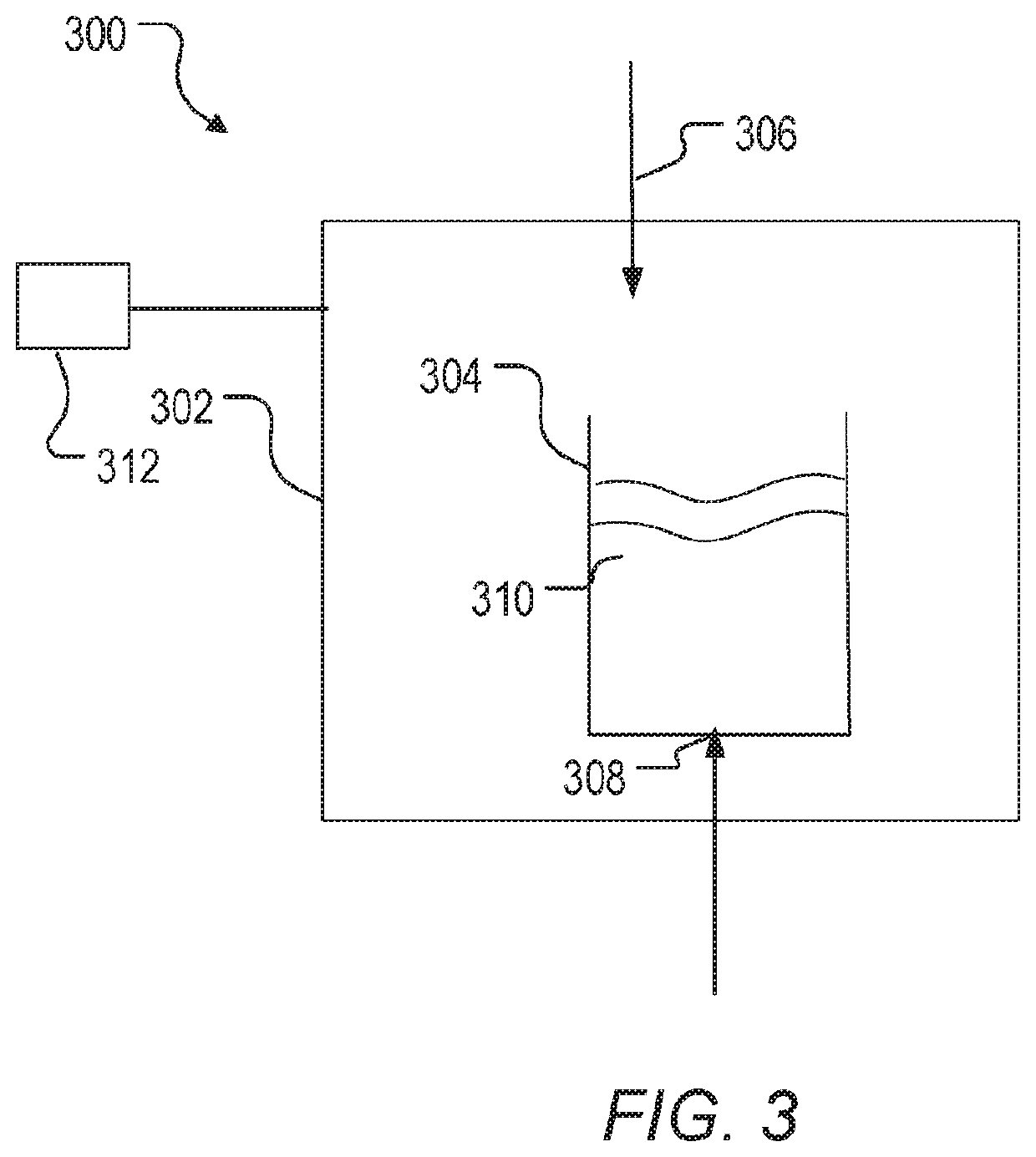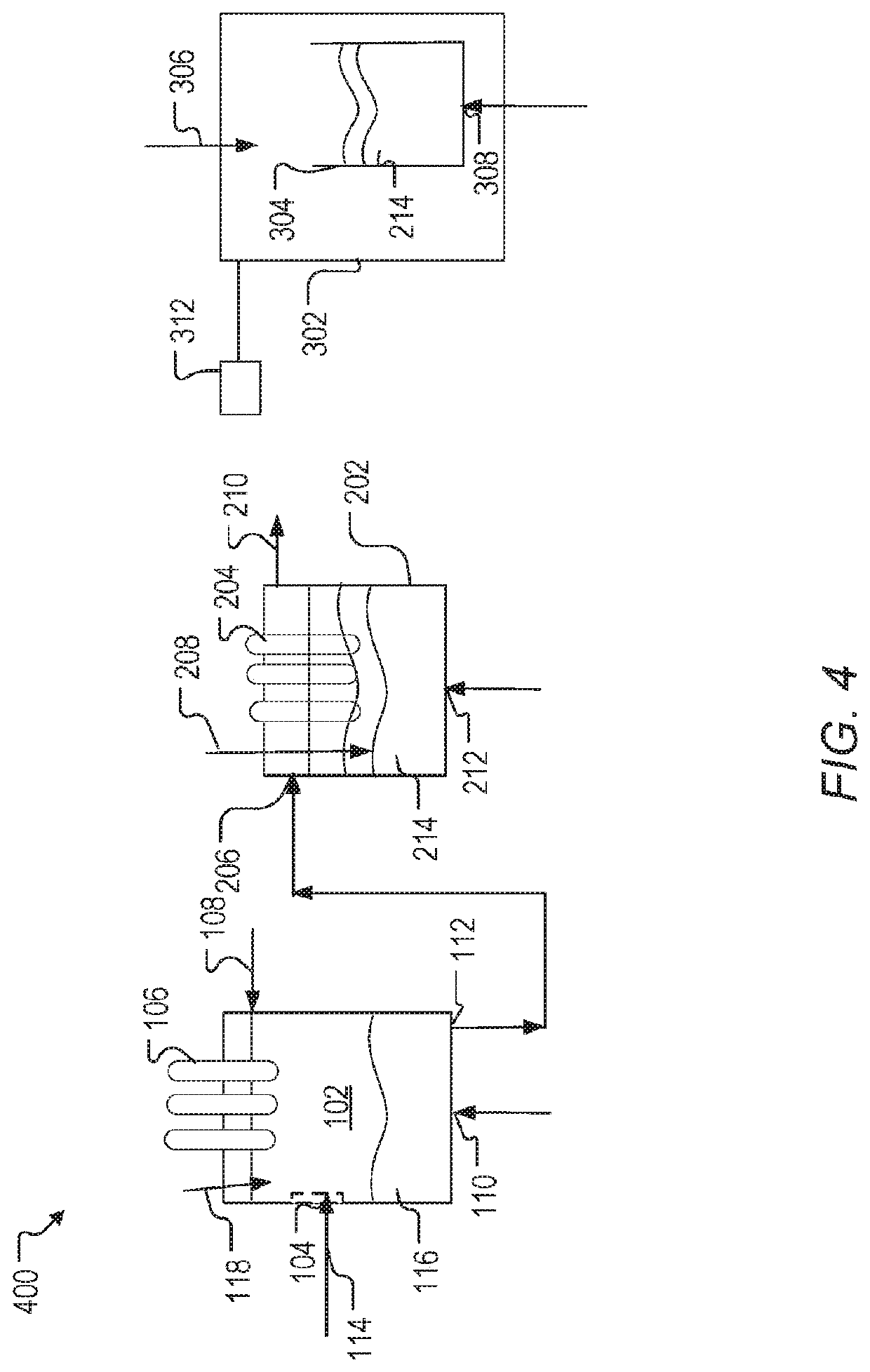Steel decarburization using carbon dioxide
a carbon dioxide and decarburization technology, applied in the field of decarburization of steel, can solve the problems of overheating the bath, affecting the yield of alloys, and accumulating a relatively high initial carbon amount, so as to reduce the oxygen level, enhance the yield of alloys, and reduce the oxygen consumption rate
- Summary
- Abstract
- Description
- Claims
- Application Information
AI Technical Summary
Benefits of technology
Problems solved by technology
Method used
Image
Examples
Embodiment Construction
[0035]A discovery has been made that provides a solution to at least some of the problems associated with the reduction of the carbon content in steel (i.e., decarburization of the steel). The addition of CO2 can provide a more energy efficient process as it reduces the need for oxygen in one or more processing steps to produce steel.
[0036]These and other non-limiting aspects of the present invention are discussed in further detail in the following sections with reference to FIGS. 1-4.
[0037]FIG. 1 depicts a schematic for a system to produce molten steel in an electric arc furnace (EAF). System 100 can include EAF 102, Iron-containing material inlet 104, electrodes 106, oxygen containing gas inlet 108, CO2 containing gas inlet 110, and molten steel outlet 112.
[0038]Iron-containing material 114 can enter EAF 102 through inlet 104. Iron-containing material can be any type of iron-based material (e.g., direct reduced iron (DRI, 80% Fe2O3), scrap metal, pig iron, etc.). In a preferred em...
PUM
| Property | Measurement | Unit |
|---|---|---|
| temperature | aaaaa | aaaaa |
| temperatures | aaaaa | aaaaa |
| wt. % | aaaaa | aaaaa |
Abstract
Description
Claims
Application Information
 Login to View More
Login to View More - R&D
- Intellectual Property
- Life Sciences
- Materials
- Tech Scout
- Unparalleled Data Quality
- Higher Quality Content
- 60% Fewer Hallucinations
Browse by: Latest US Patents, China's latest patents, Technical Efficacy Thesaurus, Application Domain, Technology Topic, Popular Technical Reports.
© 2025 PatSnap. All rights reserved.Legal|Privacy policy|Modern Slavery Act Transparency Statement|Sitemap|About US| Contact US: help@patsnap.com



